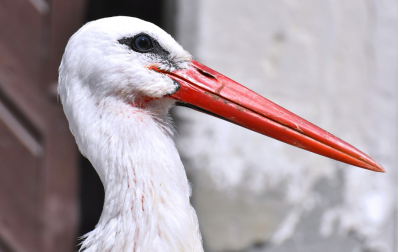Semi-colons: white stork
The Grammar Bit!
Read the three scintillating sentences opposite. You’ll notice that each sentence consists of two main clauses that have been joined with a semi-colon (;). Remember – a main clause (sometimes called an independent clause) usually contains a subject and a verb and must make sense on its own.
A semi-colon is used when the statement made in the second clause is closely related to the first. It would, of course, be possible to write two separate sentences demarcated by a full stop. e.g. (Sentence 1) As the stork migrated south, it was badly injured. She had been shot by a hunter. Alternatively, you could use a coordinating conjunction (for, and, nor, but, or, yet, so) to join the two clauses. e.g. As the stork migrated south, it was badly injured for she had been shot by a hunter. However, there is a subtle difference; the semi-colon establishes a link between the two clauses, but the readers must work out for themselves the exact nature of this link.
With your talk partner, discuss the effect of the semi-colon in each of the sentences opposite.
Factoid: JK Rowling is perhaps the most famous children’s authors who uses semi-colons frequently in her writing. Some would say that using them effectively is the mark of a very sophisticated writer.
Scintillating Sentences
1) As the stork migrated south, it was badly injured; she had been shot by a hunter.
2) The dedicated caretaker built her a stick nest; she couldn’t fly up to the roof to make it herself.
3) In the winter, the male stork migrates to Africa; the female is all alone until he returns in the spring.

Did you know?
Storks don’t have a fully functioning voice organ so they can’t sing; they make a clacking noise with their beak instead. The sound is amplified by their throat pouch, which acts as a sound box.

